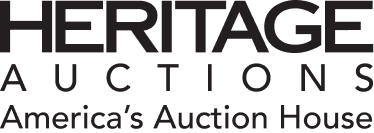LOT #1119 |
Sold on Jul 31, 2009 for: Sign-in
or Join (free & quick)
1839-O 50C PR63 NGC....
Click the image to load the highest resolution version.
Sold on Jul 31, 2009 for:
$80,500.00
Bid Source: HA.com/Live bidder
Description
Important Select Proof 1839-O Reeded Edge Half
The Krouner-Byers Specimen
1839-O 50C PR63 NGC. The proof 1839-O half dollars are
extremely rare, and relatively little is known about this enigmatic
issue. The written contributions on the subject by noted specialist
Walter Breen are ambiguous, and the issue has attracted little
attention from modern-day researchers. However, two things are
certain about this issue--they are indubitably specially struck
coins and there are only four confirmed examples extant.Perhaps the biggest question regarding the 1839-O proofs relates to the quantity of coins minted. There are no Mint records pertaining to the issue and over the years as many as 10 different pieces have been reported, though not confirmed. Census information included in auction lot descriptions has varied from four to six examples, although the latter figure includes an erroneous duplication and an unconfirmed coin. Breen suggested the existence of five specimens in his 1988 Complete Encyclopedia, but only documents four halves in his revised Encyclopedia of Proof Coins (1989); although he makes it clear in the latter reference that he was uncertain about his census. The earliest evidence relating to the mintage of proof 1839-O halves can be found in New York Coin and Stamp Company's June 1890 description of an 1838-O proof fifty cent piece (now known as the Norweb coin). In that catalog the writer notes:
"We have seen a letter from Dr. Riddell, superintendent N.O. Mint, 1838, which accompanied a similar half dollar, in which it was stated that only four half dollars of this date and mintage were issued ..."
Dr. John Riddell was never superintendent of the New Orleans Mint. He was, however, the melter and refiner and in that position he would have been intimately involved with advanced coining operations at the new branch mint. Dr. Riddell was appointed to his position by President Martin Van Buren in 1839 (Doug Winter, 2006), although the exact date is unknown. Researcher David Lange notes that "a particularly severe outbreak of yellow fever caused the mint to suspend operations from July 1 to November 30, 1839," so we can safely assume that Dr. Riddell began work at the New Orleans Mint sometime during the first quarter of 1839. This fact is important in that the Riddell letter referenced in the June 1890 auction catalog must have been dated 1839 and, as such, was referring to 1839-O proof half dollars-not the 1838-O pieces, even though the latter pieces were also struck in the first quarter of 1839--not 1838.
Carefully analyzing the 1890 catalog entry, it is noted that the letter "accompanied a similar half dollar." Since the cataloger associated the letter to the Norweb 1838-O proof half, the word "similar" is immensely significant. It is likely Riddell was referring to 1839-dated coins. To further substantiate this logic, consider that only four 1839-O proof halves are known, whereas 11 1838-O proof fifty cent pieces have been traced. Conveniently, NGC has certified four different 1839-O proof half dollars and we have traced each piece to previously reported examples (see our census at the end of this description). That fact, together with the aforementioned Riddell letter, lends credence to the belief that only four 1839-O halves were struck in proof format.
This piece grades as the third finest of the four 1839-O proof half dollars thus traced, although the eye appeal of this piece arguably places it higher within the census. Variegated russet coloration is suitably complemented by electric-blue and sea-green toning at the peripheries on both the obverse and reverse. Unsurprisingly for a proof issue, the strike is bold and the fields are delightfully reflective. Scattered hairlines in the delicate fields are observed through close scrutiny, yet the aesthetically pleasing patina does well to conceal them. A minuscule dark spot above the eagle's head shall serve as a pedigree marker for the sake of posterity.
Census of Proof 1839-O Half Dollars
This census contains the four distinct proof 1839-O half dollars known, as well as two earlier, untraced sightings that likely correspond with those below.
1. PR65 NGC. Robison Collection (Stack's, 2/1982), lot 1607; Queller Family Collection (Stack's, 10/2002), lot 448; Goldberg Coins (2/2008), lot 2177.
2. PR64 NGC. Bowers and Merena (9/1994), lot 1214; Heritage (7/2008), lot 1690.
3. PR63 NGC. The present specimen and the Breen Proof Encyclopedia Plate Coin. Krouner Collection (Lester Merkin, 2/1971), lot 736; Stack's (9/1992), lot 358; George Byers Collection (Stack's, 10/2006), lot 1098; Heritage Auction Galleries (9/2008), lot 2164.
4. PR62 NGC. Heritage Auction Galleries (9/2008), lot 2163.
Additional Appearances
A. Proof. F.C.C. Boyd; World's Greatest Collection (Numismatic Gallery, 5/1945), lot 411; Christian Allenburger (B. Max Mehl, 3/1948); R.E. Cox (Stack's, 4/1962), lot 1875. The Boyd-Cox piece may be the same as one of the above coins.
B. Proof. An unverified example that Breen reported in the Philip G. Straus Collection, circa 1951. The coin remains unseen since that time and is likely one of the four listed above.
From The Bay State Collection, Part Two.
Coin Index Numbers: (PCGS# 6253, Greysheet# 81393)
Weight: 13.36 grams
Metal: 90% Silver, 10% Copper
View all of [The Bay State Collection, Part Two ]
Auction Info
2009 August Los Angeles, CA US Coin Auction #1128 (go to Auction Home page)
Auction Dates
Jul-Aug, 2009
31st-2nd
Friday-Sunday
Bids + Registered Phone Bidders: 14
Lot Tracking Activity: N/A
Page Views: 8,499
Buyer's Premium per Lot:
15% of the successful bid per lot.
Shipping, Taxes, Terms and Bidding
Terms and Conditions | Bidding Guidelines and Bid Increments | Glossary of Terms | US & World Coin Grading Tutorial
Important information concerning Sales Tax and Resale Certificates. Learn More
Terms and Conditions | Bidding Guidelines and Bid Increments | Glossary of Terms | US & World Coin Grading Tutorial
